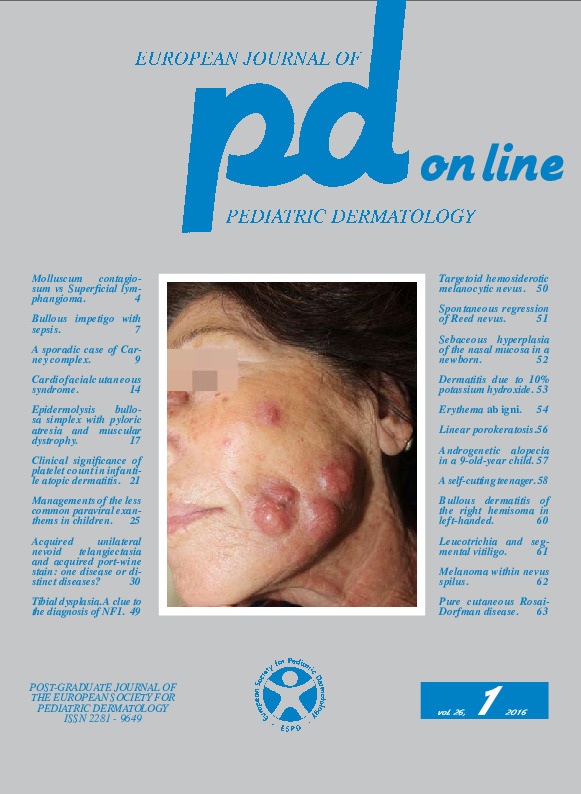Managements of the less common paraviral exanthems in children – asymmetrical periflexural exanthem, papular-purpuric gloves and socks syndrome, eruptive pseudoangiomatosis, and eruptive hypomelanosis.
Downloads
DOI:
https://doi.org/10.26326/2281-9649.26.1.1191How to Cite
Chuh A., Fölster-Holst R., Zawar V. 2016. Managements of the less common paraviral exanthems in children – asymmetrical periflexural exanthem, papular-purpuric gloves and socks syndrome, eruptive pseudoangiomatosis, and eruptive hypomelanosis. Eur. J. Pediat. Dermatol. 26 (1):25-9. 10.26326/2281-9649.26.1.1191.
pp. 25-9
Abstract
Although all paraviral exanthems in children are self-remitting, clinicians should be aware of the underlying viral infections leading to complications. Many reports covered the commonest paraviral exanthems, namely pityriasis rosea and Gianotti-Crosti syndrome. We reviewed here the managements of the less common paraviral exanthems in children. For asymmetrical periflexural exanthem/unilateral laterothoracic exanthem treatments should be tailored to the stages of the rash. For children with papular purpuric gloves and socks syndrome, important differential diagnoses such as Kawasaki disease should be excluded. Where this exanthem is related to parvovirus B19 infection, the risk of aplastic reticulocytopenia should be monitored for. Clinicians should also be aware of ongoing infectivity of parvovirus B19 infection upon rash eruption, and possible exposure to pregnant women. For children with eruptive pseudoangiomatosis, important differential diagnoses should be excluded. For eruptive hypomelanosis, the prime concern is that virological investigations should be contemplated where available, as there exists only clinical and epidemiological evidence for this novel exanthem being caused by an infectious microbe.Keywords
Acyclovir, Gianotti-Crosti syndrome, Human herpesvirus7, Human herpesvirus6, Papular acrodermatitis, pityriasis rosea

